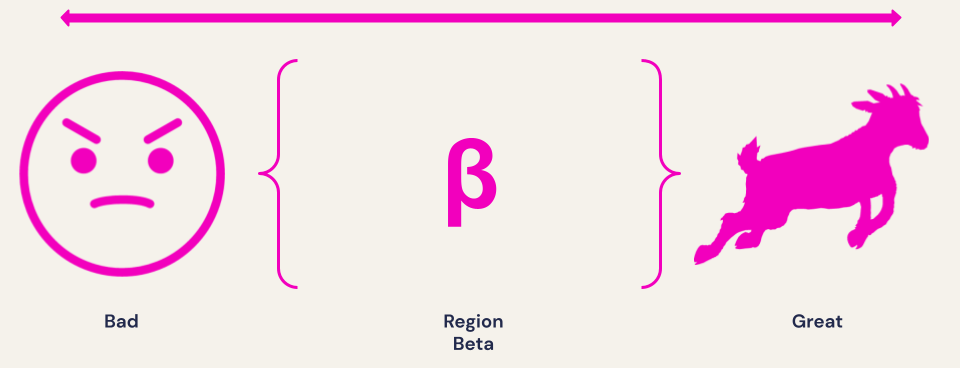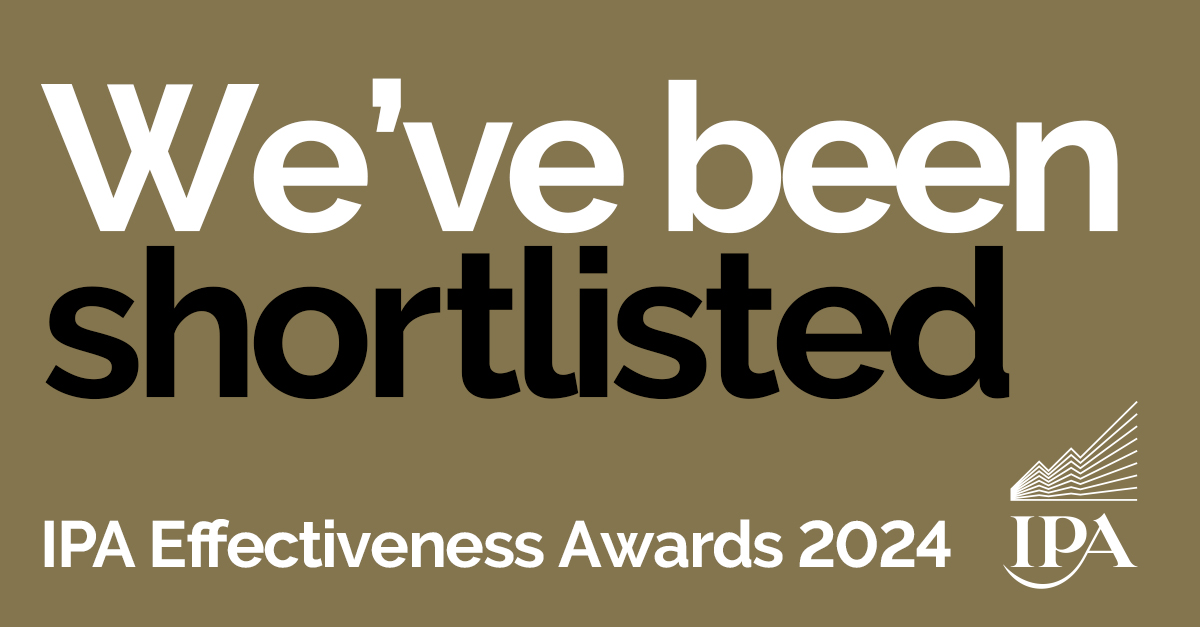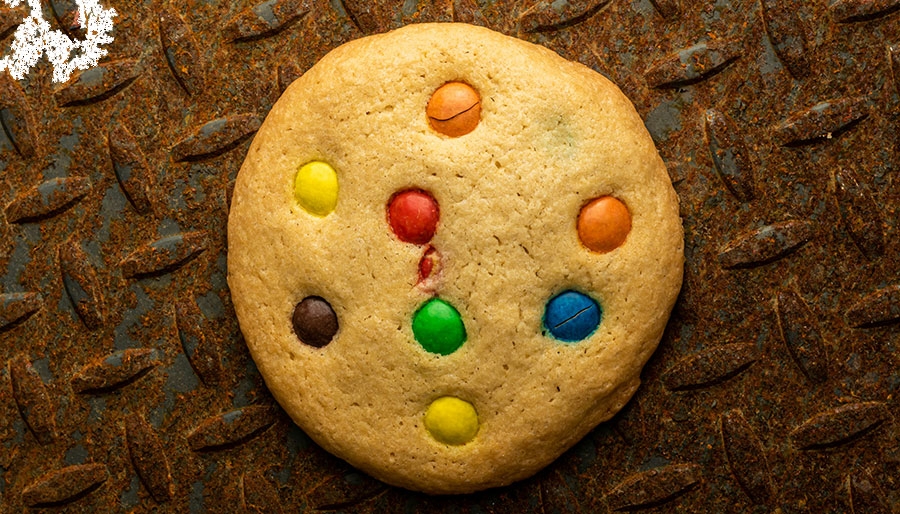When disaster strikes, are we actually better off? Does difficulty put us in a stronger position to implement positive change? And most importantly, how can adversity be leveraged to improve digital advertising effectiveness? The Region Beta Paradox (RBP) offers a behavioural science framework for thinking through transformation-through-challenge… and it makes a lot of sense for us at Anything is Possible.
Let me explain. We’re guided by eight core behaviours that challenge us to work better. This one’s at the top of the list:
1. Embrace uncertainty
Get comfortable with uncomfortable. Humans are hardwired to fear ambiguity and the unknown. But taking a calculated risk is the only way we’ve ever invented or survived. If you feel like you’re making things up as you go along, don’t worry. No one knows everything. We are shaping the future of creative, technology and media, so things are bound to feel scary at times. That’s where the good stuff happens.
The RBP puts a conceptual scaffold around this instinct and why it contributes to digital advertising effectiveness. Let’s explore its theory on why being uncomfortable is really a good thing…
Region Beta Paradox – a definition
The RBP can be defined as the phenomenon that people can sometimes recover more quickly from more distressing experiences than from less distressing ones. That difficult events create better outcomes over time. But what does that really mean?
Imagine a spectrum where you have bad on one end and great at the other.
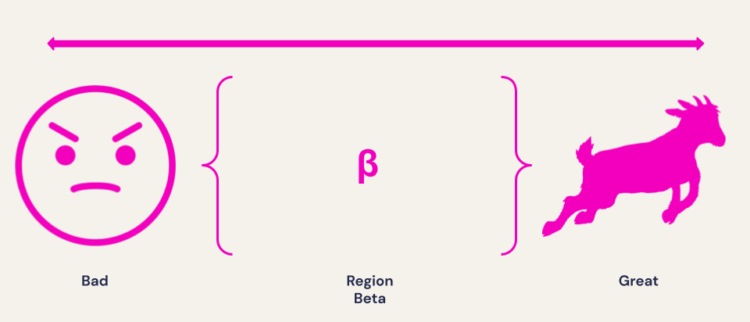
Obviously from an ad performance perspective we want to be travelling from left to right. And for a significant amount of time we are going to be in Region Beta. The trick is to minimise the amount of time you spend there – and keep a perpetual rightward direction of travel.
If you think about it from a more concrete perspective it becomes more clear. Often if you have to travel, and that distance is say less than a mile, people will generally deem that short enough to walk. It’s a nice simple solution – or looked at another way, it is not trying enough to incite change.
However, if we increase that distance to say two miles, something changes psychologically. Most people will deem that likely a little too far to walk and either choose to cycle, drive or use public transport. This is a subconscious and real-time decision most people make, and seems innocuous. But its implications are pretty significant. Try visualising it this way:
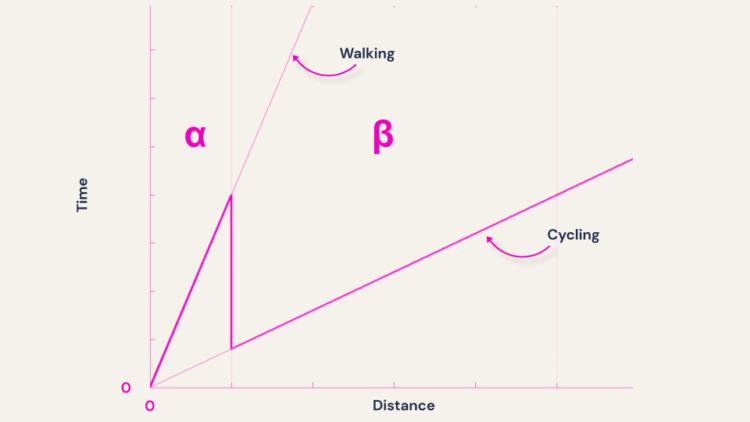
There are parts of Region Beta (β) that are much further away, but we’ll reach them quicker than most points in the nearby region alpha (α).
This raises a really important question: Why didn’t we choose to cycle when the distance was just one mile?
We would have covered that distance a lot faster...
The RBP highlights, in its simplest application, that it is sometimes better to be in a worse situation than it is to be in a better situation.
The worse a situation is, the better the solution you have to come up with – and the more it produces a beneficial effect and outcome.
This means sometimes it is better to be on the bad end of the scale, where we deem a distance too far to get there without intervention, than it is to travel a short or easy distance without intervention or change.
What it means for digital advertising effectiveness
Like always, I believe that this can be applied to not just general life, but the work we do across client accounts and advertising campaigns. For example, it’s too easy to sit in Region Beta, when campaign performance is good. Not bad, not great, but passable and on target. Maybe even slightly better than target, but not revolutionary, not transformative.
But we all want to do revolutionary work across our campaigns, no?
What we can take from the RBP phenomenon is a validation of our core behaviour described above: Embrace Uncertainty.
When things feel easy, remember that you might be stuck in Region Beta.
We should never be satisfied sitting in Region Beta, and shouldn’t become complacent and adapt to low levels of stress or discomfort. We are psychologically dispositioned to bounce back stronger from a really tough situation, so it’s worth seeking those situations out. We should take more risks, test approaches, creatives, messaging, innovation, and manually override and position ourselves on the ‘bad’ end of the spectrum if we aren’t moving towards great – to proactively kickstart change and intervention.
This is one of the conceptual frameworks we use to make sure our work is getting 1% better every day. If you believe in the power of ongoing incremental improvement and want to get a bit of it for yourself and your campaigns, you know what to do.
